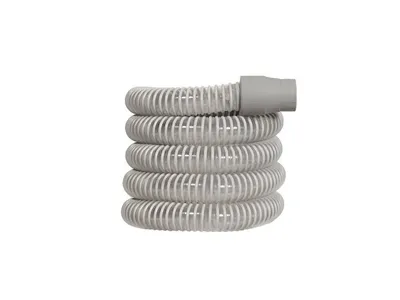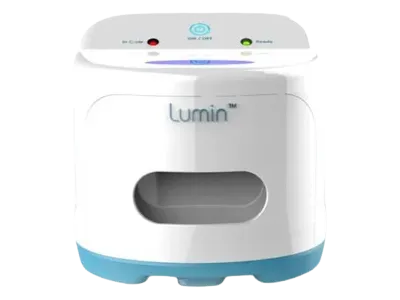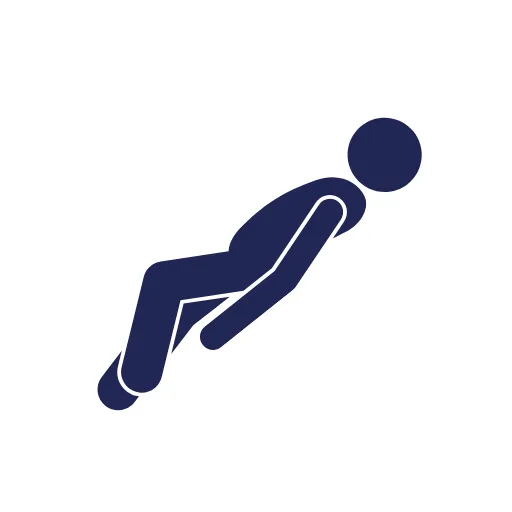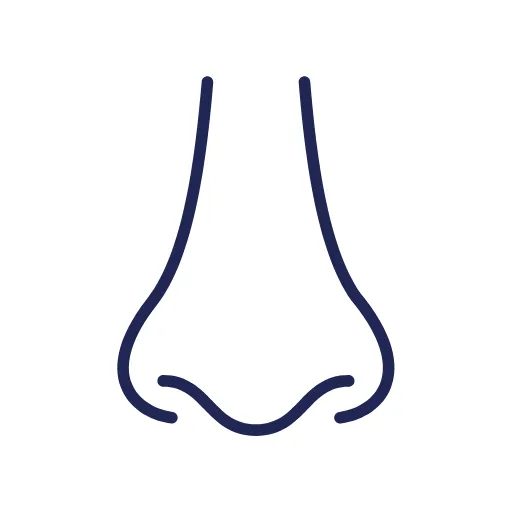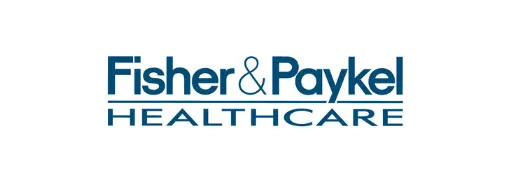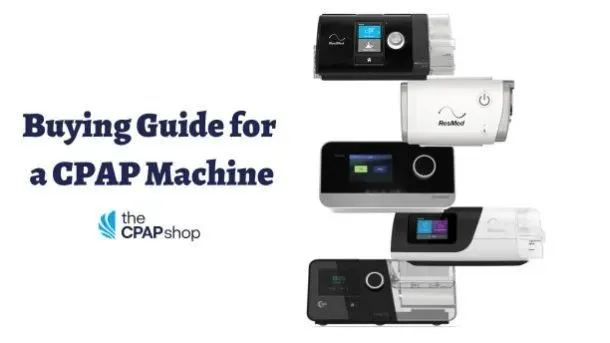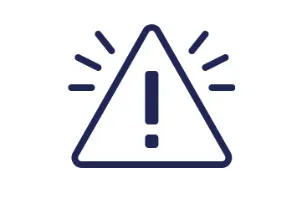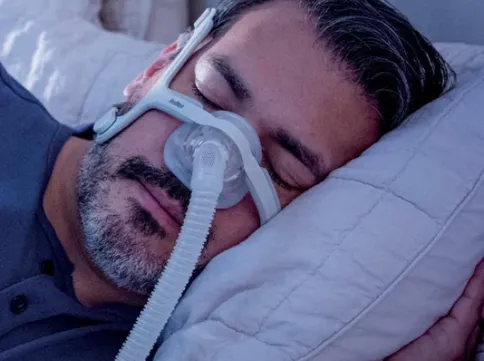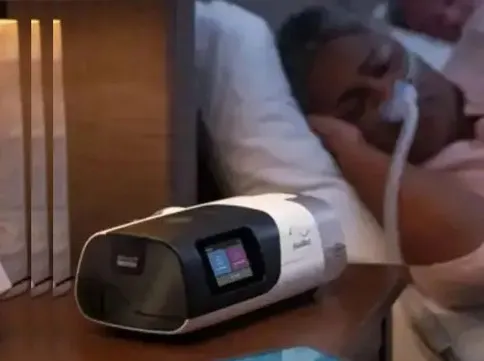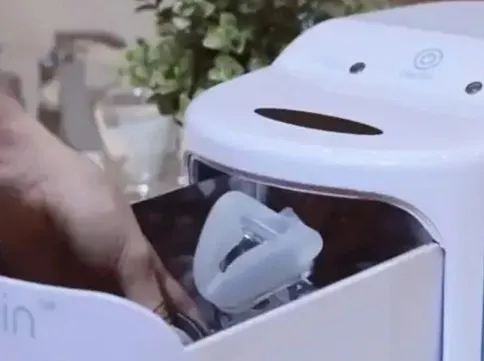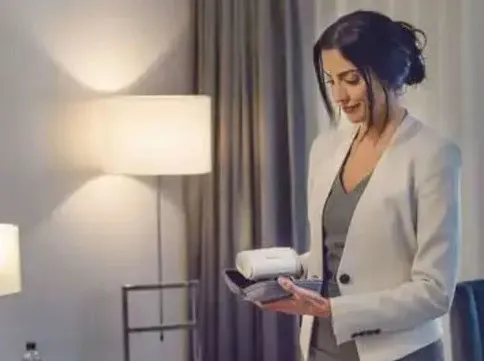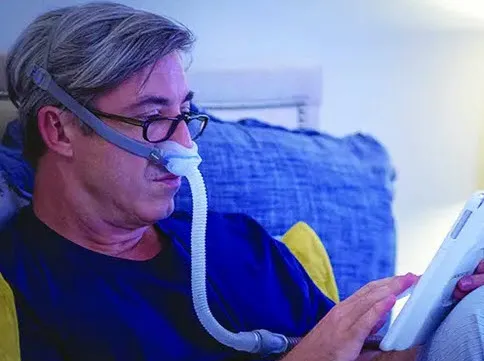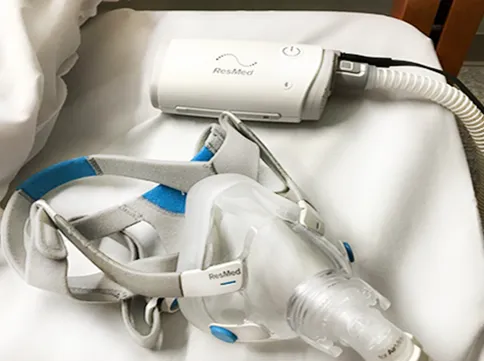We use cookies to make your experience better. To comply with the new e-Privacy directive, we need to ask for your consent to set the cookies. Cookies Policy.


What is CPAP Therapy?
- CPAP therapy stands for "Continuous Positive Airway Pressure
- It is a treatment option commonly prescribed by healthcare providers to treat obstructive sleep apnea, often referred to as the “gold standard of sleep apnea treatment”
- CPAP therapy works by using a CPAP machine to deliver a continuous flow of pressurized air via a CPAP mask worn while asleep at night
- It keeps the airway open, preventing it from collapsing to stop breathing pauses during the night
Benefits of CPAP Therapy
When diagnosed with sleep apnea, you will most likely be prescribed continuous positive airway pressure (CPAP) therapy. While CPAP therapy is mostly done at home, it should also be used when away. Regardless of when and how you are traveling or where you are going, here’s a detailed checklist to help you prepare for going away with CPAP therapy:

Reduces snoring

Improves blood pressure

Improves quality of sleep

Improves focus and productivity

Lessens daytime sleepiness and fatigue

Reduces risk of stroke and heart attack

Improves memory and cognitive function

Reduces risk of depression and anxiety


What to Expect When First Starting CPAP Therapy
It is very common that the first 2 weeks of starting CPAP therapy are the most challenging, especially the first few days, because of the new routine implemented on top of your normal lifestyle.
New CPAP patients, since they are not yet familiar and comfortable with CPAP therapy and wearing equipment, may experience discomfort like the feeling of wearing a mask, the pressurized air being sent through the mask, the feeling of being more restricted than usual, and more.
However, we want you to know that those things are completely normal! And we do not want you to give up on your therapy as that will only make your sleep apnea and its symptoms worse.
After about 2 weeks of consistent CPAP therapy, patients should see symptoms like snoring, excessive daytime sleepiness, blood pressure, and more improved.
Tips for New CPAP Patients


Check Your Equipment
Carefully examine your CPAP machine, mask, tubing, and any extra accessories at least two weeks before your trip (to give yourself time to purchase replacements if necessary). Look over all equipment for any signs of damage or wear and tear and make sure your mask parts are performing optimally. If you notice any problems with any CPAP parts or if you are in need of extra items to travel with (like a new CPAP battery), make sure you purchase them enough time in advance to bring with you for traveling.


Replace Outdated Supplies
Your CPAP parts should be on a regular maintenance and replacement schedule to make sure you are receiving the best possible therapy at all times. If your cushion, headgear, tubing, and other parts are due to be replaced, make sure you are doing that before your upcoming trip. Learn the proper replacement schedule for CPAP equipment in this blog article!


Pack Extra Supplies
Although it will take up extra space when packing, bringing extra supplies could be beneficial in case anything gets damaged or misplaced during travel. Have a backup cushion, headgear, and machine filters on hand so you are never without the essentials.
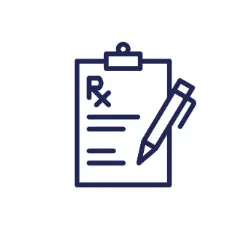

Bring a Copy of Your CPAP Prescription
Although it is not likely you will need your CPAP prescription, it could be useful to have it on hand in case of any emergencies.
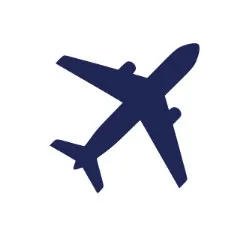

Call Your Airline
If you are traveling via an airplane, call your airline ahead of time to ensure you are following their respective guidelines regarding CPAP. Also, make sure you are using your CPAP equipment as a carry-on rather than checking it so that it is never out of your sight and won’t get lost.
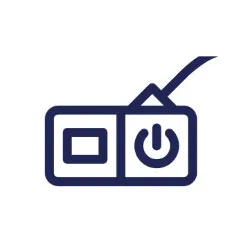

Purchase a Travel CPAP
Your standard or auto CPAP machine you use at home every night is likely not FAA-approved. Instead, you need a portable CPAP machine for travel, one that is smaller in size, and designed for on-the-go use. Portable CPAPs typically deliver the same effective treatment you need. Shop best-selling Travel CPAP Machines here.
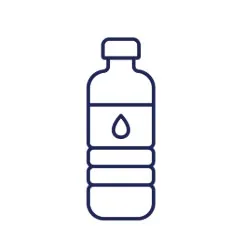

Bring Distilled Water Bottles
No matter when or where you are traveling, bringing distilled bottled water with you is a good idea to use with your machine. It is not recommended to use tap or spring water as the minerals in them can damage your CPAP equipment.


Use Your CPAP Manufacturer Carrying Case
When purchasing a CPAP machine, it will come with a carrying case. Use that when traveling to pack and protect all your CPAP equipment.
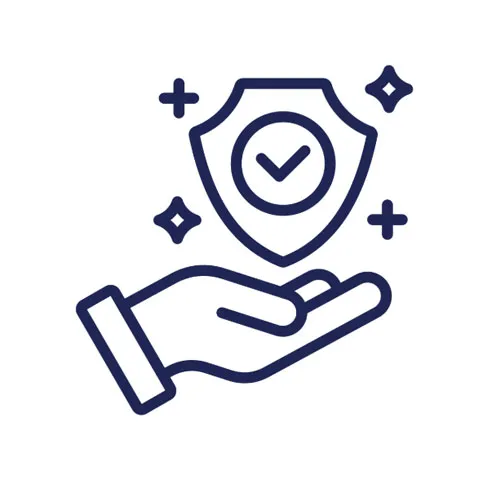

Extreme Hygiene
Since CPAP therapy is designed for use every night, its numerous parts can collect bacteria, moisture, and other germy buildup. Regular cleaning of CPAP equipment can prevent the growth of harmful contaminants, reducing the risk of infections, respiratory illness, poor product performance, and more.


An Improved Night’s Sleep
Clean CPAP equipment will ensure that a user is breathing contaminant-free air, improving their overall sleep quality and sleep apnea symptoms.
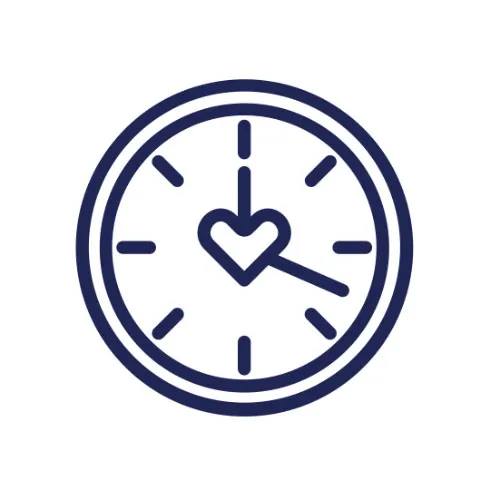

Product Longevity
Regular maintenance of CPAP equipment helps maintain the integrity of the CPAP parts. By properly removing the buildup of unwanted materials, the lifespan of CPAP parts will be prolonged, reducing the effort, frequency, and cost of buying replacement parts.


Hassle-free Cleaning Sessions
Cleaning a CPAP machine and its parts can be time-consuming because of the manual process it takes to properly sanitize them. A CPAP Sanitizer automates this process, making it easier and quicker to clean CPAP equipment, and just as effective.
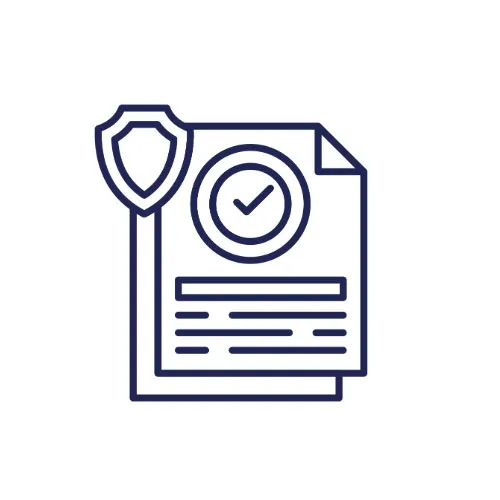

Compliant Cleaning Methods
Many healthcare providers recommend cleaning CPAP equipment with sanitizing machines to ensure hygiene standards are met, increasing overall compliance.
Want to Know What CPAP Mask is Best For You?
MaskFit AR is our 3D face scanning capability, able to be done all from home! The CPAP Shop has partnered with MaskFit AR to offer hassle-free, personalized shopping recommendations. Simply answer some questions, scan your face, and we’ll help you find the best mask that fits your needs.
Features of a Travel CPAP Machine
Travel CPAP Machines vary in features, so it’s important to know which ones matter to you.
| Benefit | Function |
|---|---|
| Machine Type | Many travel devices are equipped with two therapy types: CPAP and APAP (automatic positive airway pressure). CPAPs deliver one fixed pressure throughout the night while APAP adjust therapy pressure based on a user’s breathing. |
| Noise Level | A typical travel CPAP machine operates at a noise level of 30 decibels, which is comparable to the sound of a whisper. Travel CPAPs are made to be quieter than standard machines so that they can be discreet for on-the-go use. |
| Design | Travel CPAP machines are compact in size, and smaller than traditional CPAPs so that they can be packed easily in a suit case or carry-on bag. |
| Pressure Range | Most sleep apnea patients are prescribed CPAP or APAP therapy pressures between 4-20 centimeters of water pressure (cm H2O), and most travel machines can accommodate this. |
| AutoRamp | AutoRamp begins CPAP therapy at a lower pressure setting than what is prescribed, easing the transition of starting therapy and making it more comfortable. Once the CPAP detects you are asleep, it’ll then “ramp up” to your prescribed settings. Learn more about RampTime here. |
| Exhalation Relief | Also known as EPR, expiratory pressure relief is a feature built into some travel CPAP machines that reduces the amount of air pressure while a user exhales. This lessened pressure adds comfort to therapy, making it easier to breathe. |
| FAA-Approved | Tavel CPAPs are FAA-approved and can be used in an airplane and other forms of transportation. |
| Humidity | Most travel CPAP machines do not have an integrated humidifier to keep them small in size. Instead, some have waterless humidification options that reduce irritation caused by dry air. This is especially useful when traveling to dryer envrionments. |
| App Operation | Most portable devices do not have screens and are operated using an app on a smartphone. In the app, users can start and stop therapy, adjust pressure and comfort settings, review their sleep data, receive therapy support and education, and more. |


Additional Things You Can Do to Help Your Sleep Apnea
In addition to CPAP therapy, there are other ways to help treat your sleep apnea to lessen its symptoms and improve your quality of life. They include:
- Losing weight to reduce the fat deposited around the neck and throat that can otherwise narrow the airway
- Exercising often to improve symptoms and maintain a healthy weight
- Sleeping on your side to keep the airway open as opposed to sleeping on your back and your tongue potentially blocking your airway
- Eating a nutritious diet full of fruits, vegetables, proteins, and whole grains
- Limiting the use of alcohol and caffeine, especially during the hours that lead to bedtime
- Quitting smoking to lessen the inflammation in the airways
Products You Need When First Starting CPAP Therapy
CPAP Machine
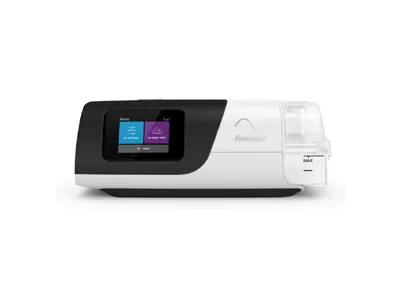

A CPAP machine delivers a constant stream of pressurized air (determined by your doctor) using a CPAP mask.
Looking to learn more about CPAP Machines?
Check out our Detailed Guide to CPAP Machines here!
CPAP Mask
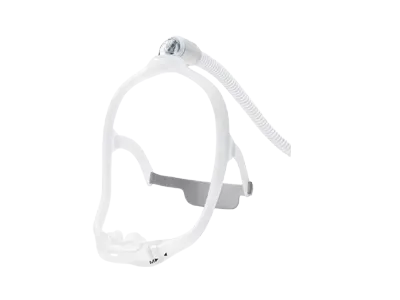

A CPAP mask receives the pressurized air from the machine and delivers it to your airways open while you sleep to keep it from collapsing, or closing, at night.
Want to know how to choose the right mask for you?
Check out our Comprehensive CPAP Mask Guide!
While these are the 3 essential products for CPAP treatment, there are also comfort accessories and replacement items to make sure your therapy remains compliant and successful.
Travel CPAPs Offered at The CPAP Shop
LiVilti PAPTIZER
- Eliminates approximately 99.9% of bacteria that can grow on CPAP equipment
- Made with 40 high-power LED lights for effective cleaning
- Cleans CPAP equipment and other household items in as little as 3 minutes
- Has 3 Smart Modes for effective cleaning
- Made in a compact design that is easy to transport
- Features a one-button operation for an extremely user-friendly experience
- Safe and easy to use
React Health Lumin
- Equipped with UV-C light that kills 99.9% of germs and bacteria that accumulate on CPAP parts
- Made in a simple, one-touch operation
- Disinfects CPAP masks and accessories in 5 minutes
- Built with a reflective drawer that ensures 360-degree of cleaning
- Cleans CPAP equipment and other household items
- Safe and simple to use


ResMed AirMini
- A premium travel CPAP designed for convenience and comfort
- Compact and lightweight design, weighing only 10.6 ounces
- Equipped with comfort features like AutoRamp, Expiratory Pressure Relief (EPR), SmartStart/Stop, and more
- Features integrated waterless humidification to add moisture to therapy air
- Easily fits into a suitcase or carry-on bag
- Seamlessly integrates with ResMed’s smartphone app for user-friendly operation
- Operates quietly for a peaceful sleeping environment
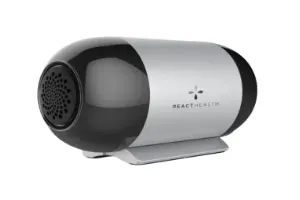

React Health Luna TravelPAP
- Designed to offer patients the freedom to get a good night’s sleep wherever they are
- Portable and easy to pack, weighing only 14 ounces
- Partners with the patient-friendly app, LightTrip (US), to operate the machine, customize settings, review therapy metrics, and more
- Equipped with RESlex Exhalation Relief to automatically detect your respiratory rhythm and adjust settings
- Includes a light on its exterior that indicates it is working properly, perfect for on-the-go use
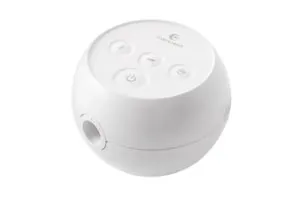

Transcend Micro
- 32% smaller and 26% lighter than the leading travel CPAP brand
- Features an ultra-portable design that is simple to pack and discreet to use in public
- Operates at a whisper-quiet design because of the included WhisperSoft Muffler and built-in sound and vibration dampening technology that minimizes noise
- Equipped with an AC power adapter for traditional use and offers the Transcend Micro PowerAway™ Battery for use while traveling
- Includes features such as GentleRise Ramp, AirRelief pressure, EZEX Pressure Relief, and more
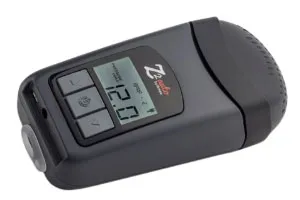

Breas Z2
- Ultra-small and lightweight CPAP device, weighing only 10.5 ounces
- Includes advanced features like auto start and stop buttons, an integrated battery, Z-breathe technology, waterless humidification, and more
- Pairs with the Z2 Nitelog App to manage a range of functionalities and controls and view sleep therapy data
- Equipped with a reusable single-patient attachment that reduces acoustic noise for a peaceful sleeping environment
- Compatible with all CPAP masks and standard tubing


ResMed AirSense 11
- Designed to automatically adjust pressure throughout the night based on your unique needs
- Includes a built-in heated humidifier for added comfort during treatment, preventing dryness and rainout
- Operates a noise level of 27 dBa, ensuring a quiet night’s sleep
- Equipped with a large touch screen, start/stop button, auto-adjusting pressure, several comfort features, and more
- Connects to ResMed’s MyAir App to gain insights and encouragement through your treatment journey
Popular Videos about Travel CPAP Machines
Popular CPAP Masks for Every Lifestyle
Parts CPAP Sanitizers Can Clean
The CPAP Shop proudly offers CPAP machines from top-selling brands that excel in performance and comfort.
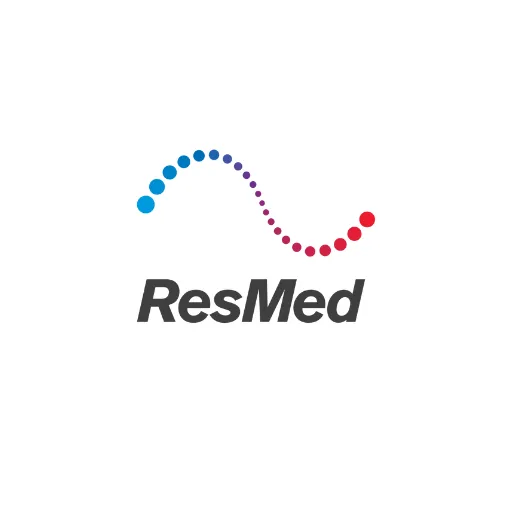

ResMed is a leading manufacturer in the CPAP industry, offering a range of cloud-connected devices that help patients manage their sleep apnea. They offer a range of CPAPs, BiPAPs, and travel machines to accommodate a range of CPAP users.


Resvent is a world leader in respiratory equipment, offering a CPAP machine product line, iBreeze, that is designed to help patients compliance with therapy.


React Health Medical is a trusted distributor and manufacturer of sleep therapy and oxygen therapy products. Its popular product line of Luna machines are available in both CPAP and BiPAPs. React Health is committed to empowering all sleep apnea patients to thrive in health and wellness.


Breas Medical is a leading manufacturer of medical equipment for sleep apnea treatment. Breas created and sells high-quality CPAP products that improve a person’s quality of life. They are committed to innovation and quality in all of their product offerings.


Although Fisher & Paykel Healthcare’s CPAP device is no longer sold in the US, its parts are still offfered at The CPAP Shop for those who continue to use this device. F&P’s expertly- designed parts help users have effective and comfortable CPAP therapy.
Replacement Schedule of CPAP Machine Parts
- Cushions: every 3 months
- Headgear: every 6 months
- Filters: look at your
machine manufacturer’s
instructions - Humidifiers: every 6 months
- Tubing: every 90 days
- Machine: every 5 years
Cleaning and Maintenance of CPAP Equipment - The CPAP Shop
Daily cleaning and maintaining CPAP equipment is very important. This article by The CPAP Shop details how and
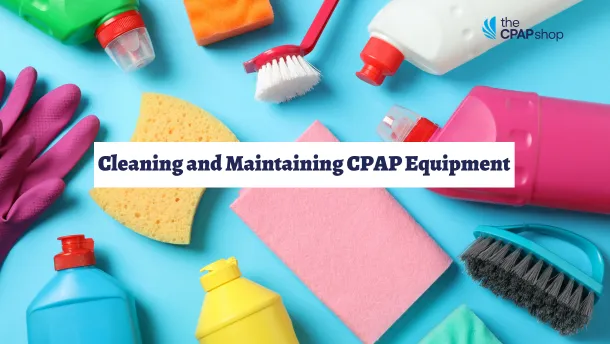

Latest CPAP Machine Videos
ResMed AirSense 11 AutoSet CPAP Machine Review
Showcasing product details, how to set it up, its unique features, and more
How to Set Up ResMed AirSense11
A detailed review for setting up this popular Resmed Machine
How to Connect Your AirMini to Bluetooth
Guided instructions to connecting this best-selling travel CPAP machine to Bluetooth.
Follow The CPAP Shop’s YouTube Page
Join our YouTube community! With 11,000 subscribers and counting, viewers of our page can watch CPAP tutorials,
product reviews, and learn tips and tricks to receive the best CPAP therapy possible.
11,770 +
Subscribers
190 +
Videos
5.3 Million
Views
Still Have Questions?
Our team at The CPAP Shop would be happy to help you!
Popular Articles to Help With Your CPAP Therapy
Looking for more articles to help you with your CPAP therapy? The CPAP Shop’s blog is your go-to place for all CPAP news, tips and tricks, product reviews, and more to help you feel supported every step of your CPAP journey. Check out our blog today!
Looking for more articles to help you with your CPAP therapy?
The CPAP Shop’s blog is your go-to place for all CPAP news, tips and tricks, product reviews, and more to help you feel supported every step of your CPAP journey. Check out our blog today!
Popular Articles and Product Reviews about Travel CPAP Machines


Best Travel CPAP Machines of 2025
Compiled by our experts, reviewers, and customer ratings


Best Portable CPAP Machines Under $1,000
Check out the best-selling, budget-friednly portable CPAP machines
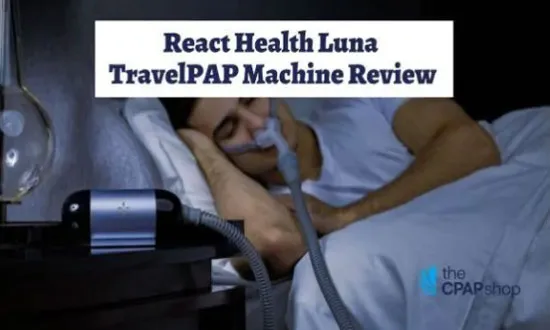

React Health Luna TravelPAP CPAP Machine Review
Offers patients the freedom to get a good night’s sleep no matter where they are
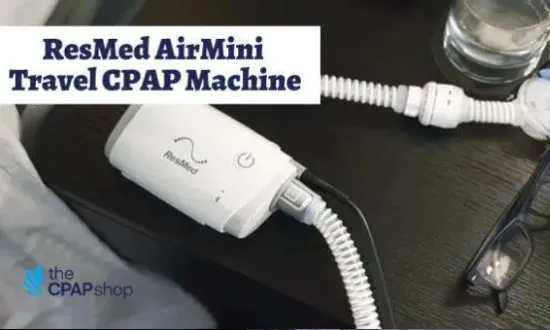

ResMed AirMini AutoSet Travel CPAP Machine Review
Provides effective CPAP treatment in a small, compact design


Breaz Z2 Auto Travel CPAP Machine Review
Features an advanced algorithm for more comfort on-the-go
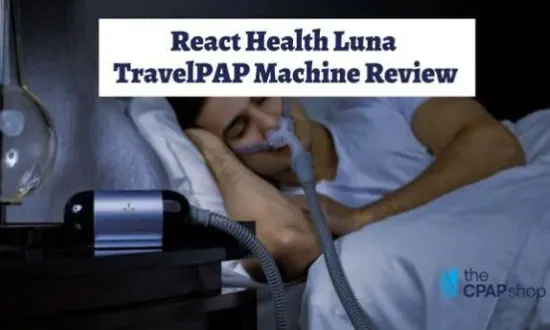

Transcend Micro Auto Travel CPAP Machine
The smallest and lightest CPAP device available on the market
Looking for more articles to help you with your CPAP therapy? The CPAP Shop’s blog is your go-to place for all CPAP news, tips and tricks, product reviews, and more to help you feel supported every step of your CPAP journey. Check out our blog today!
Looking for More Articles to Help You With Your CPAP Therapy
The CPAP Shop’s blog is your go-to place for all CPAP news, tips and tricks, product reviews, and more to help you feel supported every step of your CPAP journey.
How Small is a Travel CPAP Machine Really?
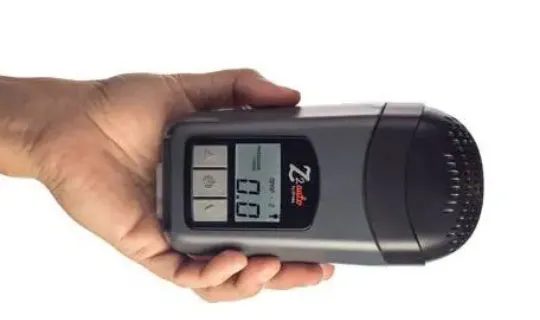



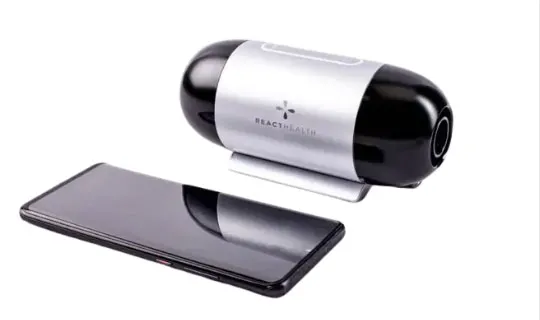

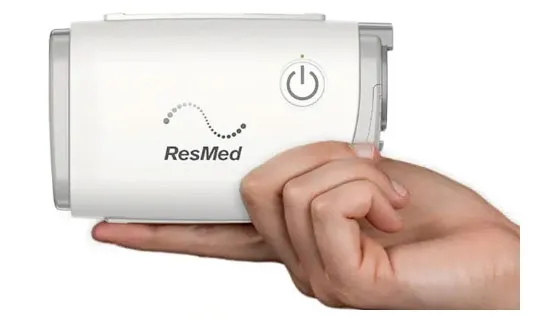

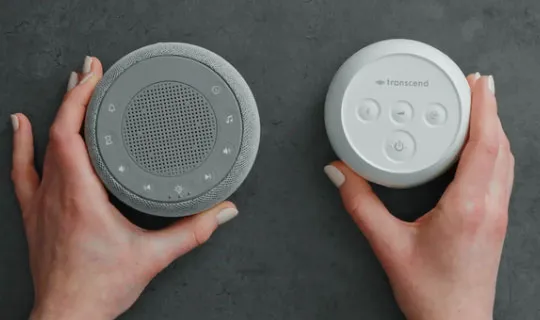



PRE-TRAVEL:
What You Need to Bring When Traveling with CPAP
Use this as a guide when packing all your CPAP equipment for a trip away.
DURING TRAVEL:
What You Need to Know About CPAP Therapy
Follow these important steps so that you still are getting successful therapy every night, even while being away from home.


Find Power
- Always make sure you have power for your CPAP machine (whether it be from an outlet or battery)
- If you are staying at a hotel, especially internationally, do some research or call the hotel ahead to make sure you have the proper power adapters or converters
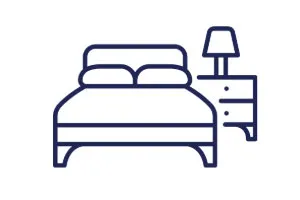

Set Up Properly
- Recreate the setup you have at home whenever you are staying in an RV, hotel, cruise ship, or other place
- Some instances include: connecting your tubing, testing wearing your mask, connecting to power, filling your humidifier (if applicable), and more


Note Environmental Differences
- Be mindful if you are traveling to places with different humidity, altitude, and air quality different than what you are used to as that will affect your breathing and settings
POST TRAVEL:
How to Get Back to “Normal” CPAP Therapy After Travel
Take these steps to clean and maintain your travel CPAP equipment so that they will be ready for your next trip.


Check Your Parts
- Inspect your CPAP machine, mask, tubing, and other parts for any damage or wear and tear
- Replace any parts that need to be replaced


Clean Everything
- Deep cleaning all of your parts is essential after traveling and being exposed to germs and bacteria
- Disassemble all equipment and clean each as per their manufacturer’s guidelines


Store Properly
- Make sure your travel CPAP equipment is stored in a clean, dry space
- Avoid storing anything in locations with high temperatures or humidity as they can be damaging to parts
FAQs When Beginning CPAP Therapy
The main indicator that CPAP is working is improved sleep quality. You may feel more rested during the day, have more energy, and notice fewer symptoms of sleep apnea (like snoring or waking up gasping for air). Your doctor may also review data from your CPAP machine to evaluate your progress.
It’s very common to feel discomfort at first. Try adjusting the straps of the mask to find a better fit, use a different type of mask (full face, nasal, or nasal pillow), or use a humidifier to reduce dryness and irritation in the airways. If problems persist, talk to your doctor or call The CPAP Shop for additional tips.
CPAP therapy is typically a long-term treatment. Some people may need to use it for life, while others may be able to reduce or stop therapy after weight loss, surgery, or other treatments. It’s essential to follow your doctor’s advice and monitor your progress.
If after a few weeks, you still are not comfortable with your treatment, your healthcare provider may suggest adjustments to your treatment like changing your pressure settings, recommending a different style mask, or using a different type of machine (BiPAP).
CPAP therapy doesn’t cure sleep apnea, but it helps manage the condition by preventing the airway from collapsing while asleep. With consistent use, it can significantly improve symptoms and quality of life.
It’s important to continue using CPAP therapy even if you feel better. Sleep apnea is a chronic condition, and stopping treatment can lead to a return of symptoms. If you're feeling significantly better, talk to your doctor about whether any adjustments to your therapy are appropriate.
5 Common Concerns About Starting CPAP Therapy
Don’t sweat it! Starting CPAP therapy can be a big adjustment, so having questions and concerns is completely normal.
The CPAP Shop is here to help ease that transition. Here are 5 common concerns new CPAP users often have:
This is one of the most common questions we hear. New users often worry about claustrophobia and discomfort and whether they will be able to move around while sleeping. To combat these feelings, make sure the mask you choose fits properly to you, as that is crucial to successful CPAP therapy. If you can’t tolerate your mask, you won’t use the machine.
It’s very normal to want to know how long it’ll take to start seeing symptom and overall health improvements to make sure the time and effort of CPAP therapy is paying off. The good news is CPAP therapy can start working almost immediately, with some patients noticing improvements after only one night of treatment. However, it may also take up to 1-2 weeks to fully adjust and see the benefits of treatment. Managing those expectations and understanding the benefits of therapy (increased energy, mood, health, and much more!) can motivate you to stick with therapy. As with many things, consistency is key!
Dry mouth, nasal congestion, skin irritation, and swallowing air are all potential side effects that can worry new users. Addressing these concerns upfront allows you to learn about solutions and preventative measures, like using a humidifier (used to add moisture to the air for more comfortable therapy) and adjusting your CPAP mask to fit correctly on your face.
CPAP machines and masks require regular cleaning to prevent the build-up of germs an bacteria (that can cause infections) and ensure proper function. This can feel overwhelming at first having to stick to a new routine, but patients will quickly learn that proper cleaning is essential for your health and the longevity of your equipment. A clear understanding of the process will make it less daunting.
CPAP therapy is a long-term commitment, and you will need to figure out how to integrate it into your daily life and social situations to see optimal results. Thankfully, CPAP products vary in size, noise level, and design to accommodate users whether they are traveling, sharing a bed with their partner, and more. Addressing your specific lifestyle habits and concerns can help you develop strategies for managing CPAP use in various situations, leading to greater adherence and overall success.


















